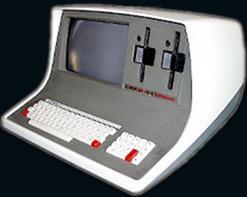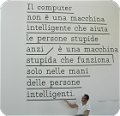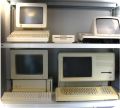 WELCOME TO THE "PERSONAL AND HOME COMPUTER MUSEUM" INITIATIVE
WELCOME TO THE "PERSONAL AND HOME COMPUTER MUSEUM" INITIATIVE
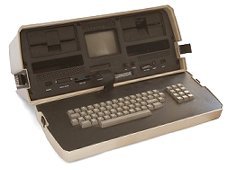 Our everyday life is so permeated by computers that we don't even think about it anymore.
Work, services, holydays, even social and love relationships, everything is somewhat conditioned by the presence of the computer
or by some communication device which inside has nothing more than a miniaturized computer. Nevertheless, there
was a time when the computer was something very different: an exoteric item, wardrobe-sized and accessible only
to personnel wearing a white gown. No longer than three decades ago, access to a computer (or "electronic brain"
as it was called) was a privilege of technicians and scientists only. What drastically changed things was the
"Microcomputer Revolution", an unstoppable process that between the mid '70s and the mid '90s of the last
century dragged the computers out of data processing centers, universities and scientific labs, and brought them
into the offices, the small companies and the homes of common people.
Our everyday life is so permeated by computers that we don't even think about it anymore.
Work, services, holydays, even social and love relationships, everything is somewhat conditioned by the presence of the computer
or by some communication device which inside has nothing more than a miniaturized computer. Nevertheless, there
was a time when the computer was something very different: an exoteric item, wardrobe-sized and accessible only
to personnel wearing a white gown. No longer than three decades ago, access to a computer (or "electronic brain"
as it was called) was a privilege of technicians and scientists only. What drastically changed things was the
"Microcomputer Revolution", an unstoppable process that between the mid '70s and the mid '90s of the last
century dragged the computers out of data processing centers, universities and scientific labs, and brought them
into the offices, the small companies and the homes of common people.
The Microcomputer Revolution generated an impressive market with assortment of models, functionalities,
solutions and design of the many computers offered. Evolution and marketing choices have brought some of those
experiences to extinction, while other converged into modern machines, now with well standardized
characteristics and operating systems.
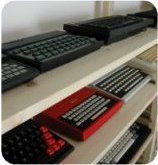 But nothing of what we use today would have been possible without the
penetration of those computers, ancestors of modern ones, into the houses of each of us. To those machines we
are in debt, which qualifies them for a final destiny more honourable than being dumped in a landfill or melted
in a recycling plant.
The "PERSONAL AND HOME COMPUTER MUSEUM" initiative aims to re-pay that debt: by acquiring, restoring, preserving
and maintaining in good working order the main and the lesser actors of that revolution.
Activities do not end with the acquisition of obsolete computers and their peripherals, but also include
gathering books and magazines of that age, software, technical documents, electronic components and instruments
necessary to repair each machine and keep it going. This way, we will be able to show a living "what we once
were", and how even the most sophisticated of today's interfaces is, in the end, the grandson of a simple
blinking cursor on a green screen.
But nothing of what we use today would have been possible without the
penetration of those computers, ancestors of modern ones, into the houses of each of us. To those machines we
are in debt, which qualifies them for a final destiny more honourable than being dumped in a landfill or melted
in a recycling plant.
The "PERSONAL AND HOME COMPUTER MUSEUM" initiative aims to re-pay that debt: by acquiring, restoring, preserving
and maintaining in good working order the main and the lesser actors of that revolution.
Activities do not end with the acquisition of obsolete computers and their peripherals, but also include
gathering books and magazines of that age, software, technical documents, electronic components and instruments
necessary to repair each machine and keep it going. This way, we will be able to show a living "what we once
were", and how even the most sophisticated of today's interfaces is, in the end, the grandson of a simple
blinking cursor on a green screen.
